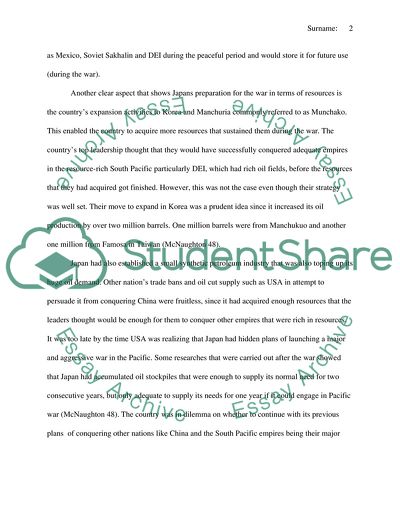Cite this document
(Who Prepared better for WWII in the Pacific Theater - Japan or U.S Coursework Example | Topics and Well Written Essays - 1250 words, n.d.)
Who Prepared better for WWII in the Pacific Theater - Japan or U.S Coursework Example | Topics and Well Written Essays - 1250 words. https://studentshare.org/military/1815620-who-prepared-better-for-wwii-in-the-pacific-theater-japan-or-us
Who Prepared better for WWII in the Pacific Theater - Japan or U.S Coursework Example | Topics and Well Written Essays - 1250 words. https://studentshare.org/military/1815620-who-prepared-better-for-wwii-in-the-pacific-theater-japan-or-us
(Who Prepared Better for WWII in the Pacific Theater - Japan or U.S Coursework Example | Topics and Well Written Essays - 1250 Words)
Who Prepared Better for WWII in the Pacific Theater - Japan or U.S Coursework Example | Topics and Well Written Essays - 1250 Words. https://studentshare.org/military/1815620-who-prepared-better-for-wwii-in-the-pacific-theater-japan-or-us.
Who Prepared Better for WWII in the Pacific Theater - Japan or U.S Coursework Example | Topics and Well Written Essays - 1250 Words. https://studentshare.org/military/1815620-who-prepared-better-for-wwii-in-the-pacific-theater-japan-or-us.
“Who Prepared Better for WWII in the Pacific Theater - Japan or U.S Coursework Example | Topics and Well Written Essays - 1250 Words”. https://studentshare.org/military/1815620-who-prepared-better-for-wwii-in-the-pacific-theater-japan-or-us.


